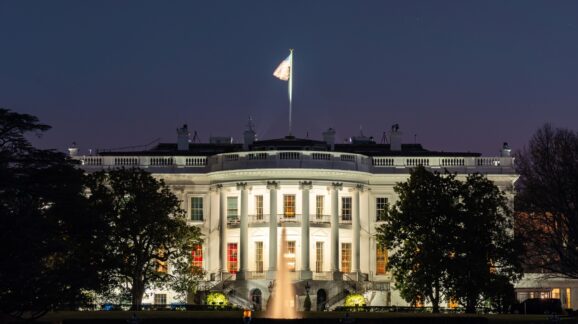Under Biden, thousands of government guidance documents are becoming much harder to find

Photo Credit: Getty
Laws passed by Congress get cataloged in the U.S. Code, while rules and regulations that incubate in the daily Federal Register land in the Code of Federal Regulations, which sprawls out at over 186,000 pages. However, the sub-regulatory guidance documents that concern us here far outnumber both laws and regulations. These encompass a wide range of materials, including agency memoranda, notices, bulletins, directives, news releases, and even speeches by agency officials, and they are getting harder to track.
My recent informal “inventory” of such documents found over 103,642 accessible or semi-accessible guidance documents. This was an ostensible decline from 107,000 a year ago, but this does not appear to be because things are getting better. Rather, this administration is becoming less transparent. Documents are disappearing from public view.
The state of guidance documents
This slipping of transparency is unfortunate because transparency plays a critical role in ensuring democratic accountability and empowering citizens. It’s essential to recognize the sheer volume of guidance documents issued by government agencies, and render customizable access to them as simple as possible.
During his presidency, Donald Trump took steps to enhance transparency by requiring agencies to prune guidance documents and present them henceforth on user-friendly portals.
Unfortunately, Joe Biden directed agencies to repeal these and other disclosure and accountability initiatives. These suppressions of Trump-era guidance document portal/inventories are occurring at the very moment the administration seeks to expand top-down executive powers in alarming new ways.
A positive development on the legislative front is the “Guidance Out of Darkness Act” (GOOD Act) which—with bipartisan support—aims to codify the disclosure of guidance documents on dedicated website portals.
Despite setbacks under Biden, some remnants of Trump’s portals remain accessible, meaning that a far more extensive number of documents remain readily accessible than before his tenure when disclosure was truly abysmal.
Over 103,000 documents remain, but that represents a decline and points to the vulnerability of disclosure going forward without legislative action. Few agencies maintain updated inventories of their guidance documents that observers can trust to be complete. The current state of disclosure is precarious and vanishings could happen at any moment.
The way forward
In light of these challenges, it is crucial for Congress to address the chaos surrounding sub-regulatory guidance documents. Along with the GOOD Act, the establishment of an official “Code”-style one-stop portal for all agencies, along with the implementation of species/genus “Guidance Identification Number” classifications could help expose and then restrain the administrative state’s expansion.
Furthermore, as the Biden administration pursues its aggressive “whole-of-government” regulatory agenda we have detailed elsewhere, there is a growing trend of agencies collaborating across the executive branch on various initiatives. Those in collusion can be expected to increasingly rely upon guidance documents rather than traditional public notice-and-comment rulemaking, as we already see with “equity action plans” and “climate crisis,” artificial intelligence “blueprints,” “environmental justice” and other pursuits.
This bureaucratic abuse of power is only likely to worsen, making it essential to ensure that guidance documents are cross-referenceable by topic, not just by agency so that illegitimate ambitions can be monitored and controlled.
A guide for Congress
I have looked over these inventories for the past three years and have some observations that might help members of Congress who take oversight seriously:
- Many agencies abandoned Trump’s straightforward web addresses (www.[agencyname].gov/guidance), making it unnecessarily challenging to find the subset of guidance documents they bother to disclose.
- Biden’s systematic elimination of the Trump-era formal rules to govern the preparation and disclosure of guidance procedures does not necessarily mean agencies have eliminated or obscured their guidance altogether. This is a good thing and a hook upon which to anchor improvements and reforms.
- Many agencies’ guidance documents cannot be tallied and are marked in the inventory as “indeterminate.” Incorporating these would vastly increase the size of the guidance inventory.
- Chaos reigns: Some agencies have not updated their guidance counts at all; some have removed what they once presented; others (even some independent agencies) to their credit have disclosed additional guidance even under Biden.
- The best compilations provide helpful tables, dates, classification numbers, and search boxes; these procedures should be formalized and systematized uniformly across government with a single portal (not simply hundreds of separate agency ones).
- Some agencies solicit public comments on certain guidance, effectively treating it as a normal rule; that is another “good guidance practice” to encourage.
- It is an increasing challenge to comprehend the “economic significance” of guidance documents individually or taken as a whole. This is a greater problem today given that the administration has raised the threshold for what is considered an “economically significant” rule from $100 million to $200 million in annual economic impact via executive order and as part of OMB’s highly problematic “Circular A-4” rewrite of regulatory review standards. The burdens of unablated guidance will be even more prone to slipping under the radar.
- The status of guidance documents that were voided due to their having missed Trump’s deadline for retention is unclear; it is difficult to imagine safeguards exist that would have prevented agencies from silently restoring them.
The chief lesson with respect to regulatory dark matter learned over the past few years is that transparency and disclosure can improve extremely rapidly—but they can also deteriorate even more easily.
The transparency of government guidance documents is at a critical juncture. Remnants of previous initiatives, however, have left a foundation for continued progress if Congress gives guidance about guidance.